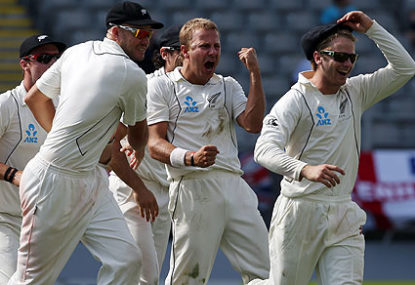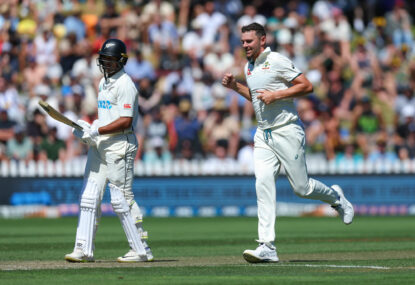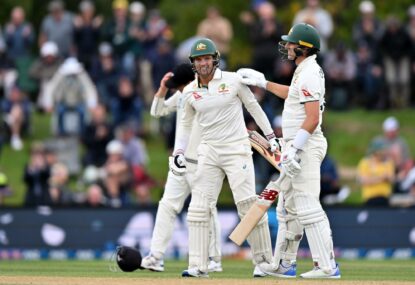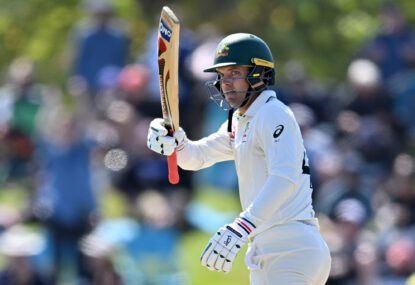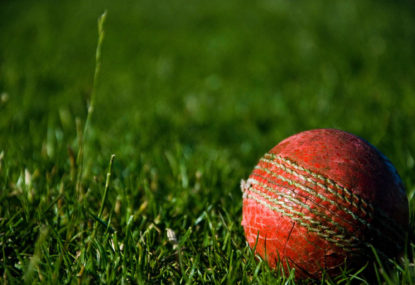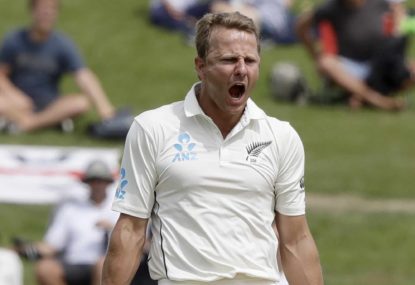The upcoming Test series between New Zealand and the West Indies, taking place on the colder part of the Tasman Sea, will be unlikely to steal cricket’s headlines.
It is sandwiched between a fiery Ashes duel and a top of the ICC Test rankings clash between South Africa and India, but for the two nations concerned it is every bit as important.
The series represents a contest between two proud cricketing nations who stand aloof from the better half of the ICC table, striving to place themselves alongside those nations who have in recent years, belonged to that very class above.
In a game that was ostensibly founded in England’s south east counties way back when DRS would more likely have stood for Descartes’ rationalist script, it is little coincidence that the international game continues to be dominated by nations of the British commonwealth.
Nevertheless, since the turn of the century a number of power shifts have elapsed in the world of international cricket. The red coats have rediscovered their niche and put themselves back on the scoresheet.
The Boers eventually realised their potential and appear to have vanquished their “chokers” tag. Well to an extent at least.
The convicts enjoyed a seemingly invincible period in the early naughties before the old guard eventually declared and the replacements struggled to bat themselves back into the same position.
While the two sub continental giants have run completely different courses, neither has been devoid of controversy.
One sits comfortably in second place on the cricket’s omniscient chart of worth, having fed for decades off the willow of a little gem and his capable cronies.
The other lingers precariously in fourth place after enduring an inconsistent 13 years that saw players as magnificent as Saqlain, Waqar and more recently Mohammed Yousef, cast into oblivion for reasons incomprehensible to common westerners.
The reasons are a mystery to many western cricket fans, who enjoy cricket for its tranquil ambience and utter elegance, regarding it as a game and not a product for mercenaries to exploit.
The highest tier of international cricket comprises of these five sides.
While the remaining five Test nations coexist with their superiors in theory, the divide in class is as apparent as a leg in a cast.
The West Indies currently occupy sixth position as Sri Lanka and New Zealand scramble for seventh and eighth respectively. The bottom two units are further off bridging this gap than Ian Thorpe was making a successful Olympic comeback.
This begs the question, can Test cricket become even more of a spectacle and contain six, seven or perhaps even eight teams capable of mixing it with anyone, anywhere?
Sri Lanka have threatened eclipsing the hurdle now and then, but they will continue to be pigeon-holed as pyjama wearing specialists until they can cultivate a fast bowling attack that is able to take 10 wickets on foreign soil.
Here, we shall focus on the other two sides that come into the debate, who go head to head later this week.
If we assess the current state of both entities we acknowledge there is little separating the two.
Neither line-up is blessed with across the board Test experience, with Shiv Chanderpaul and Brendon McCullum the exceptions.
These two also represent the lone players in their respective teams that would be considered of international quality.
Before you go and reenact Veruka Salt’s fit in Willy Wonka and the chocolate factory, I am not saying McCullum is a world class batsman as his numbers certainly do not indicate.
Nor is it polite to place him in the same sentence as his Guyanese adversary whose career tally is akin to the figure one would expect to pay for a new hatchback.
However, he is in the eyes of his opponents a dangerous and highly skilled batsman.
Both are supported by a handful of rookies of the international arena and players yet to comfortably establish themselves at the highest level, and rather uncannily, one unfulfilled prodigy that displays performances redolent of their ability levels far too infrequently.
The latter lies in the form of Marlon Samuels of the West Indies and Ross Taylor of New Zealand.
Both have divulged shades of brilliance and even at times demonstrated they have the aptitude to transform their games to the level exhibited by the greats of their homeland but neither has delivered with a required level of consistency to justly attain that mantle.
We then see two highly unproven bowling line-ups, each operating under a dedicated yet unverified leader figure in Tim Southee and Tino Best respectively.
New Zealand probably hold the upper hand in the seam bowling department while the West Indies would claim the ascendency in the breaking of the wrist variety.
And finally, both possess spirited, yet much maligned leaders who despite their glowing displays at media conferences must be feeling pressure similar to that of a potato shoved up an exhaust pipe.
If I were like the former Australian captain and betting inclined, I would lay down a pineapple or two on this series ending the career of either one of both Daren Sammy and Brendon McCullum.
From an outsider’s perspective, we have the makings of an evenly fought contest.
Can the West Indies end their dreadful rut of capitulations away from the Caribbean? Or will New Zealand be able to register their first Test victory of 2013 and run away with the series?
Regardless of the outcome it appears as likely as a bacon sandwich at a Bah Mitzvah that either of these two sides will feature in the same figurative league as their current superiors within the foreseeable future.
The West Indies have been there and done that before. However, the sight of four skyscraping, chain dangling, cussing island dwellers who release red objects that resemble glazed cherries in their gigantic hands at speeds in excess of 90 miles an hour seems a distant memory.
They have never recovered from their volatile fall from grace in the mid nineties.
Test cricket has been usurped by some of life’s more fleeting sports, namely Twenty20 cricket and basketball, thanks the proliferation of their exposure due to the onset of cable television.
Many may argue that their sensibilities have finally been catered for, given their indolent predilections.
With a scarce minority as exceptions, the West Indians appear to be bereft of passion when it comes to Test cricket.
This isn’t only an observation of the players but the West Indies cricket board itself.
How much effort is placed on getting the best side out onto the park for every match?
Why do we infrequently see the likes of Gayle, Sarwan or Dwayne Bravo playing?
I’d love to see them back among the upper echelons of Test cricket within the next five years but not even as a figment of my imagination does it seem possible.
Then there’s the Kiwis.
Well, the sheep shagging toilers have become renowned for their ability to scrap in any contest whether it be rugby, cricket or courting a member of the opposite sex.
Sadly, with respect to the latter two, their weight of determination cannot outweigh a pronounced lack of ability.
Wearing one’s heart on one’s sleeve cannot disguise skill level beneath it.
This has been the case of New Zealand cricket since its instalment as a Test-playing nation.
In the modern era only the likes of Chris Cairns, Daniel Vettori and maybe Steven Fleming would be considered world-class players, and even during that golden era of kiwi cricket in the early 2000s under Fleming’s astute leadership did they lack a solid X1 to mix it with the best for five days of intense cricket.
They have been proverbially light in the batting department and like the West Indians appear to be more competitive in the shorter formats of the game where their bit part all rounders are more effective.
Perhaps it is too much of an ask to encourage a nation of four and a half million to tango with the big boys.
Over the course of the three-match series we should get an accurate indication of where both sides are at. Will either be able to bridge the current gap inherent in Test cricket by the end of the decade?
From this writer’s perspective, no.





























































































